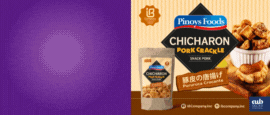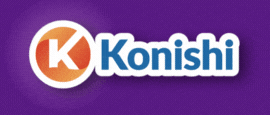“Hay fever” (seasonal allergic rhinitis) is most common in early spring,which is bad news for hay fever sufferers. The symptoms of hay fever develop as a reaction to allergens (allergy-causing substances) in the air, most notably to pollens in the early spring. Other examples of airborne allergens include mold spores, dust, and animal dander.
Pollen consists of the minuscule, male cells of flowering plants. Pollen from garden flowers usually doesn’t cause allergies, since this type of pollen is large and waxy and most often carried by insects.
Hay fever is typically a reaction to pollen from trees, grasses and weeds that makes the immune system believe pollen is a harmful invader, triggering production of the antibody immunoglobulin E.
This stimulates release of histamine, causing inflammation and swelling of the nasal passages, along with excessive mucus production and other symptoms such as sneezing, itching nose and throat, watery eyes and a clear, runny nose.
Your doctor can help you determine whether treatments are necessary, such as prescription or nonprescription antihistamines to control the symptoms of hay fever. Whether or not you take medication for hay fever, you can still take steps to reduce the severity of your symptoms. The American Academy of Allergy, Asthma, and Immunology (AAAAI) has some useful tips for those who suffer from seasonal allergies:
- Wash bed sheets weekly in hot water.
- Always bathe and wash hair before bedtime (pollen can collect on skin and hair throughout the day).
- Do not hang clothes outside to dry where they can trap pollens.
- Wear a filter mask when mowing or working outdoors.
- Avoid peak times for pollen exposure (hot, dry, windy days, usually between 10 a.m. and 4 p.m.). Although pollens are usually emitted in early morning, peak times for dissemination are between around 10 a.m. and 4 p.m.
- Be aware of local pollen counts in your area (visit the National Allergy Bureau Web site).
- Keep windows and car windows closed; use air conditioning in both if possible rather than opening windows.
- Perform a thorough spring cleaning of your home, including replacing heating and A/C filters and cleaning ducts and vents.
- Check bathrooms and other damp areas in your home frequently for mold and mildew, and remove visible mold with nontoxic cleaners.
- Keep pets out of the bedroom and off of furniture, since they may carry pollen if they have been outdoors.
Also, before you reach for anti-histamine medications this spring, there are a number of foods, nutrients and herbs that are extremely beneficial for alleviating hay fever symptoms.
Try this 10 superfoods to boost out your immune system.
Kiwifruit
Kiwifruit contain more vitamin C, gram for gram, than oranges (especially the yellow kiwifruit variety).
Vitamin C is an effective natural anti-histamine and anti-inflammatory, and it also supports healthy immune function and protects from secondary respiratory conditions.
Kiwi fruit also contain bioflavanoids, antioxidants that complement vitamin C’s effect in the body and are potent anti-histamines and anti-inflammatories.
Try taking a vitamin C supplement with bioflavanoids, at a dosage of around 2g of vitamin C and 1000mg
of bioflavanoids a day.Other good food sources of vitamin C and bioflavanoids include citrus fruits, strawberries, red capsicums, broccoli, papaya, guava and mango.
Pineapple
Pineapple is a rich source of bromelain, an enzyme with strong systemic anti-inflammatory effects, which helps decrease mucosal inflammation and nasal congestion.
Turmeric
Commonly used in Middle Eastern and Asian cuisine, this spice contains curcumin, a phytochemical with powerful antioxidant and anti-inflammatory actions that are comparable to steroidal and nonsteroidal drugs.
Curcumin has been found to have anti-allergy properties, which inhibit the release of histamine.
Turmeric is most often used in dried form, but try fresh turmeric, which looks similar to a small ginger root. Peel a section and grate, then add about two teaspoons to rice dishes, stir-fries or soups. Just make sure you wear gloves as turmeric stains.
Onion
Having an onion a day can help keep your hay fever at bay. Onions are packed with the flavanoid quercetin,
a powerful antioxidant, anti-inflammatory and natural anti-histamine.Eat red onions raw and tossed through salads, or on sandwiches or in cooked dishes. Quercetin is also found in apples, kale, red grapes, berries, cherries and parsley.
Licorice and nettle teas
Studies have shown that nettle tea can help relieve inflammation of the upper respiratory tract and ease nasal congestion, sneezing and itching.
Drinking licorice tea can also alleviate symptoms. Licorice root has a soothing effect and helps to reduce irritation of the respiratory system.
Orange and green fruit and vegetables
The vibrant colour of carrots, pumpkin, apricots, mango and papaya indicates high levels of beta-carotene, which is converted to vitamin A in the body. Green leafy veg are also an excellent source (the orange colour is masked by their green chlorophyll content).
Vitamin A is important for healthy mucous membranes throughout the respiratory tract. It also helps promote healthy immune function, prevent secondary respiratory infections and reduce inflammation.
Horseradish and garlic
Horseradish is a pungent root vegetable which acts as a decongestant, helping to clear nasal passages. Grated fresh horseradish root adds a lovely kick to roast meats and vegetables.
Garlic helps clear nasal congestion and its potent antibiotic properties help prevent secondary respiratory infections in chronic suffers. It is also a good source of quercetin, a natural anti-histamine.
Probiotics
Probiotics contain beneficial bacteria, and taking them can help boost our intestinal tract, so a daily dose of probiotics can help hay fever sufferers restore a more balanced immune response to pollens.
Without a healthy balance of good bacteria in our gut, our immunity is likely to be compromised, leaving us more susceptible to developing allergies and illnesses.
Taking a probiotic supplement daily is recommended, along with consuming fermented foods such as sauerkraut, pickled sprouts and vegetables and miso.
Ginger
Make yourself a fresh vegie juice with a good slice of fresh ginger. Ginger is a powerful natural anti-inflammatory that helps reduce nasal swelling and associated hay fever symptoms.
A good juice combo is carrot, celery, beetroot, apple and ginger. You can also add in some green “leafies” such as parsley, mint, kale or spinach. Fresh ginger can be added to curries and stir-fries, and is delicious made as a hot or iced tea.
Avoid certain foods
Limit or avoid cow’s milk and other dairy products as they can increase the production of mucus in the respiratory tract and exacerbate hay fever nasal congestion. Try alternatives such as rice, almond, quinoa and coconut milks.
Source: Medicinenet,google



















